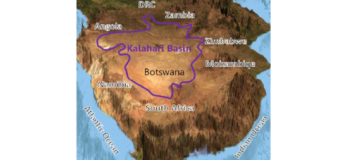
Seminario - A new look at an old landscape: the chronology of the Kalahari Group sediments
Relatore: Prof. Ari Matmon - The Hebrew University of Jerusalem - Institute of Earth Sciences I Martedì 7 Maggio - ore 16.30 | AULA 0B - Complesso didattico “Fiore di Botta” - via del Pescarotto 8
07.05.2024
The Kalahari Basin, southern Africa, is one of the world’s largest cratonic basins. It is believed that the sediments filling it, the Kalahari Group Sediments (KGS), have been deposited at least since 65Ma.
However, dating results are surprising, indicating that the entire depth of the KGS is generally younger than 5 million years. For example, burial ages obtained from a 55 m section of KGS from the Mamatwan Mine, southern Kalahari, indicate that the majority of deposition occurred at 1‐1.2 Ma. This Pleistocene sequence overlies the Archaean basement and results from other parts of the basin are similar. The oldest ages of late‐Miocene, are encountered in only two sites. Results also imply a less arid early‐Pleistocene environment than the present in southern Africa, and major reorganization of drainage systems. Our data establish the existence of a shallow water body that persisted for >450ka prior to 1.2 Ma. A high‐density hominin occupation is suggested by archaeological evidence in the area. Independently, the residence time of the Kalahari sand blanket, that covers large parts of the basin, is determined applying a cosmogenic isotope‐based model. Results indicate that throughout the Kalahari, sand penetrated and covered the basin 1‐2.5 Ma and that since ~1 Ma the Kalahari sand cover has been mostly stable. Overall, the new examination of the KGS implies a dynamic landscape in which cycles of aggradation‐erosion occurred, but only the last one is preserved in the sedimentary record. The preserved sediments ranges between late Miocene to early Pleistocene, and the dominance of aeolian activity in the last 1 Ma is the result of the overall aridification in southern Africa.





